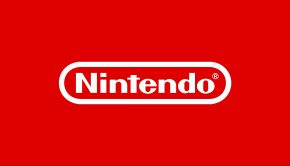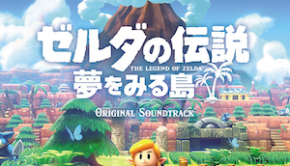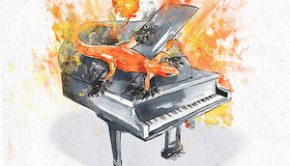Hirokazu Tanaka Profile
 |
Also Known As: 田中宏和 (たなかひろかず) / Hip Tanaka / Hip Tanaka.β / Hip tanaka.ex / Hirokazu / Tanaka Hirokazu Extra |
| Date of Birth: December 13, 1957 (Kyoto) |
|
| Residence: Kyoto |
|
| Game Works: Donkey Kong, Metroid, Kid Icarus, Mother |
|
| Official Site: Japanese Site |
History
| Organisation | Type | Tenure | Role |
| Nintendo R&D1 | Game Developer | 1980 – 1995 | Sound Designer |
| Nintendo R&D1 | Game Developer | 1984 – 1995 | Composer |
| Shampoos | Music Group | 1986 – 1995 | Performer |
| Nintendo R&D1 | Game Developer | 1990 – 1999 | Sound Director |
| Nintendo R&D1 | Game Developer | 1995 – 1999 | Director |
| Creatures | Game Developer | 1999 – 2005 | Director |
| Creatures | Game Developer | 2000 – | President |
| Harmonics International | Music Production | 2005 – 2007 | Studio Musician |
Biography
Hirokazu Tanaka is the president of toy company subsidiary Creatures Inc., the composer of many of Nintendo’s earliest titles, and the writer of the Pokémon animated series’ theme songs. Born on December 13, 1957 in Kyoto, Tanaka was introduced to music at the age of five when he attended private afternoon classes at the Yamaha Music School. When nine, he also took piano lessons for two years, but otherwise received no other formal music education. Having been exposed to a range of classical and movie soundtracks by his mother, he also developed a taste for rock music when nine thanks to a television show featuring The Monkees. This inspired him to set up a band with his school friends and cover acts such as the Beatles, Burt Bacharach, and Simon and Garfunkel. These rewarding experiences resulted in his involvement in numerous other bands throughout his adolescence, where he engaged in keyboard, drums, and guitar performance, while also teaching himself how to compose original music. He explored rock, jazz, and fusion music through these varied experiences, though reggae developments during the 1980s were what especially excited him and ultimate influenced his career.
Tanaka’s passion for music distracted from his university studies as an electronic engineering major and, to the concern of his professors, he seemed intent on becoming a composer rather than an engineer. In 1980, the artist successfully applied to Nintendo as a sound engineer after a newspaper advertisement inspired his interest. He liked the idea of combining his love for music with his technical expertise as video games gained widespread popularity in Japan. Nevertheless, the decision to accept the job was a difficult one given the latest band he was involved in were finalists at a major music competition and, upon Tanaka’s recruitment, were forced to replace him as they made their national debut. Tanaka’s first game project was creating sound effects for the 1980 Arcade shooter Space Firebird. Given ROM size limitations, it was necessary for him to create all sound tools by himself using binary coding to account for switches that manifest addresses and data being placed side-by-side. Adding to the technical demands of the project, he was given multiple additional tasks such as selecting the arcade machine’s amps and speaker set-up, using numerous technical books to assist him. Tanaka adopted similar roles on Radar Scope and Heli Fire, two other early arcade titles.
Tanaka adopted a similar role on Shigeru Miyamoto’s Donkey Kong the following year. A massive hit in Japan and America alike, the title made Nintendo a household name and brought the debut of the company’s most popular characters, Mario and Donkey Kong. Collaborating closely with jingle and background music creator Yukio Kaneoka on the project, the sound was created little-by-little by combining transistors, condensers, and resistance. To Tanaka’s delight, the game’s immediately recognisable sound effects were sampled on Jerry Buckner and Gary Garcia’s original album Pac-Man Fever in 1982. Tanaka undertook sound effects design roles on two further hits, Donkey Kong Jr. and Mario Bros., with Kaneoka. The artist was also extensively involved in the Game & Watch titles, a line of handheld LCD titles designed by Gunpei Yokoi. While the initial titles in the series did not feature sound, Tanaka changed this with Mickey & Donald and Donkey Kong II in 1982. In 1983, Tanaka was promoted to the composer for the first time on Donkey Kong 3; though the hardware remained primitive, he reflected his individuality by offering a few busy jingles and a focus on chromatic runs. He also wrote the minimalistic soundtracks for several further Game & Watch titles, namely Popeye, Snoopy, Pinball, Donkey Kong Jr., Mario’s Cement Factory, Mario’s Away Bombs, and Spitball Sparky.
Hirokazu Tanaka switched his focus to the Famicom (released in the West as the Nintendo Entertainment System) as it prepared for launch in Japan in 1983. During the early years of the system, the Donkey Kong arcade games and Mario Bros. were ported to the system with Tanaka’s assistance in the sound department. Rather than use the console’s internal drivers like most designers, he developed custom sequencers using his own programming language to maximise sound chip capability and allow direct access to the music source. In 1984, Tanaka assisted in the design and production of the NES Zapper, the light gun accessory for the Nintendo Entertainment System. He helped to popularise the accessory by creating brief scores for the compatible titles Wild Gunman, Duck Hunt, Hogan’s Alley, and Gumshoe. The light gun project firmly associated Tanaka with Gunpei Yokoi’s team at Nintendo Research & Development 1, while new employee Koji Kondo began heading the music department of what became Nintendo Entertainment Analysis & Development. Subsequently, Tanaka worked on several more NES titles, offering an iconic main theme for Balloon Fight, a few ditties for Urban Champion and Wrecking Crew, and the more eccentric accompaniments to Stack-Up and Gyromite. Aware of every aspect of the console’s sound generator, he was able to implement these scores convincingly and efficiently.
Tanaka’s scores helped to define ’enjoyable’ video game music as simple, melodious, upbeat, and quirky as games came to widespread attention around 1985. Such music also helped to inspire other iconic melodic scores of the era, such as Gradius, Super Mario Bros., and Mappy, Tanaka was disappointed that consequent competition across the industry resulted in an influx of cheerful pop-like scores that didn’t necessarily fit their respective games. He aimed to change that after being assigned 1986’s Metroid, produced for the Famicom Disk System by R&D1 spinoff company Intelligent Systems. He intended to portray the sounds of encounters with living creatures and the intensity of an underground labyrinth escape; as a result, he rejected hummable melodies in favour of dark ambience that made no distinction between music and sound effects. Though initially criticised for being overly serious, the score was recognised for demonstrating the interactive potential of game music. For Kid Icarus, Tanaka created a melody-focused score that was more harmonically elaborate and emotional than his previous efforts. During the same period, the artist also produced and supervised the sound for several genre-defining titles composed by other artists: the dating simulator Miho Nakayama’s Heartbeat High School, the military strategy game Famicom Wars, and the Famicom Detective Club visual novels. Outside of work, he also joined the three-man band the Shampoos and released their debut album.
As Nintendo R&D1 shifted its focus to developing Game Boy, Tanaka assisted creating the sound source for the handheld console in 1988. He was subsequently assigned to score its launch titles Yakuman and Super Mario Land. The latter was predictably a best-seller and Tanaka included many catchy upbeat compositions to accompany it, but controversially excluded Kondo’s Super Mario Bros. themes. Given the superficial nature of the gameplay in the other titles, Tanaka felt it was appropriate to focus on creating catchy jingles once again. Also for the Game Boy, the artist handled the sound production for the ports of Balloon Kid, Golf, and Tetris to the system. Emerging as a best-selling puzzle game, Tetris featured three compositions to accompany gameplay: Type A was the Russian folk song “Korobeiniki” that became engraved in popular culture due to the game, Type B was a fast-paced eccentric original composition by Tanaka, and Type C was J.S. Bach’s French Suite No. 3 in B-Minor. Following this success, the artist wrote his final solo scores on behalf of two more puzzle games. One was Tetris designer Alexey Pajitnov’s follow-up project, Knight Move, which remained a Japan exclusive. The other was Dr. Mario, a popular video game that became famed for its main theme — a lively, quirky composition filled with lyrical writing and extensive development.
Reflecting the influence of his early video game scores, Tanaka was invited to work on a range of both internal and external projects in the early 1990s. He received much recognition for scoring Mother with Keiichi Suzuki and Hiroshi Kanazu on behalf of second party developer Ape. With its tender and youthful chiptune melodies, the score remarkably complemented the gameplay and endeared to many listeners in Japan. It went on to receive a best-selling arranged album. The artist was also asked to lead several major projects within Nintendo R&D1 and Intelligent Systems. They included the first instalments of the tactical RPG series Fire Emblem, the technologically ambitious 3D shooter X, and the legendary art tool Mario Paint. With scores becoming ever more complex, Tanaka felt these projects would suffer if he single-handedly balanced them. As a consequence, he introduced several new composers to Nintendo R&D1 and trained them on these titles, namely Yuka Tsujiyoko, Ryoji Yoshitomi, and Kazumi Totaka. These employees went on to have distinguished careers of their own, through series such as Fire Emblem, Wario Land, and Animal Crossing, while maintaining the musical and philosophical influences of Hirokazu Tanaka. The artist also handed over the role of sound director for Super Metroid to Kenji Yamamoto and newcomer Minako Hamano.
In 1994, Tanaka contributed to the sequel Mother 2: Gigya’s Counterattack, released overseas as Earthbound. Despite taking a subsidiary role to Keiichi Suzuki, Tanaka spruced the score with memorable and endearing melodies. The subsequent year, he helped to produce the sound driver of the failed handheld, the Virtual Boy, and co-composed the funk-influenced score to the external developed Snoopy Concert. He also briefly revived his band, the Shampoos, going on to release a diverse second album and a remix of “Bridge Over Troubled Water”. From 1997, Tanaka conceived and directed the production of two related children-targeted Game Boy and Game Boy Color peripherals. As a result of a strong desire to create a new product and put everything he felt in the flow of the gaming industry, he designed the Game Boy Camera (aka Pocket Camera) and the thermal Game Boy Printer (aka Pocket Printer). After drawing images and programming prototype games for the intended hardware, he gave a presentation to former Nintendo president Hiroshi Yamauchi for approval. Game Freak assisted with the manufacture of the final products. For the camera, Tanaka also prepared the sequencer Trippy-H that allowed porting core parts of the Game Boy sound source to allow gamers to enjoy Game Boy music from and was later exploited by pirate software. The hardware sold well from their 1998 release to 2003 discontinuation and numerous games were compatible with the hardware.
While working on these peripherals, Tanaka was invited to create the Japanese theme songs for the first season of the Pokémon animated series, based loosely on the Game Boy titles. He was selected for the project by Tsunekazu Ishihara, graphics designer of Earthbound turned founder and president of Creatures, a Pokémon production company that owns a third of the rights to the franchise (Game Freak and Nintendo owning the rest). Tanaka initially worked on the series in his part-time, treating the project as a light-hearted break from his day work. He initially captivated Japanese listeners with the first series’ opening theme “Aim to Be a Pokémon Master”, combining irresistibly catchy melodies and retro rock stylings with spirited performances from the protagonist’s seiyuu Rica Matsumoto. But soon enough, the Pokémon franchise ended up growing into a phenomenon beyond his imagination and he was requested to compose even more songs for the initial season, which eventually spanned 83 episodes. As the series exploded further, Tanaka was also asked to create the CM songs for the Pokémon Trading Card Game (“Let’s Trade Please”) and Game Boy titles (“Can You Count Pokémon Baby?”), as well as the opening and ending themes for Pokémon: The First Movie and the short Pikachu’s Vacation.
With the Pokémon craze continuing, Nintendo eventually forbade Hirokazu Tanaka to work on further theme songs, given employees were not allowed to officially work for other companies. Wanting to continue writing theme songs, Tanaka decided to leave Nintendo at the start of 1999 to work as a full-time member of Creatures. After all, he greatly enjoyed the experience of working on the franchise and didn’t want to let down his legion of fans; while his theme songs were not used in the West, they were enjoyed by huge audiences in Japan and even inspired best-selling single and album releases from Media Factory subsidiary Pikachu Records. In the years since, Tanaka has returned to compose theme songs for most new seasons and generations of the Pokémon animated series, as well as the annually released featured films, the majority in collaboration with lyricist Akihito Toda. While the artist has generally stayed faithful to the concepts that made the original series’ theme songs so popular, over time he has enhanced their production quality, worked with diverse vocalists, and shown a willingness to experiment with new styles and approaches. His songs continued to be released in numerous singles and albums, and were even featured in studio releases by artists Shoko Nakagawa, Takeshi Tsuruno, and girl band Whiteberry.
In 2000, Tanaka succeded Ishihara to become the president of Creatures. Together with executives from The Pokémon Company and Game Freak, Tanaka has helped to determine the direction of the Pokémon series during its long tenure. The company specialises in 3D modelling of the pocket monsters and designing trading cards for the series. During Tanaka’s presidency, the company have also designed and developed numerous spinoff games in the series, including the Pokémon e-Card, Pokémon Ranger, and PokéPark titles. While Tanaka has taken supervisory roles on most of these productions, he was personally responsible for the direction of the e-Card titles, always interested in using hardware to develop novel gameplay approaches. During his initial year, he also designed and directed 2001’s Chee-Chai Alien, a title that he had wanted to produce since he was at Nintendo; the unique premise of this title was to collect aliens from artificial light sources using the handheld’s Game Boy Color’s Infrared port. Several years later, Tanaka also conceived the equally quirky follow-up title Nonono Puzzle Chailien, which featured three different modes of puzzle gameplay. Both were fringe titles that were never localised, but they still confidently executed interested concepts.
Though Tanaka has moved on from composing video games, he has occasionally revisited his past. He delighted classic gamers by remixing his classic Nintendo compositions at the annual Extra: Hyper Game Music Event in 2007 and 2008. Producer Masatoshi Nakamura described Tanaka as “at the centre of these events”, noting his divine status among chiptune fans. For Super Smash Bros. Brawl, Tanaka also made surprise chiptune arrangements of Donkey Kong and Kirby: Squeak Squad. Since 2005, the artist has dedicated less time to writing Pokémon theme songs, usually penning one a year. His latest theme songs have been dedicated to the television series Pokémon: Best Wishes, spanning the titular opening theme to the latest ending theme “Sakura-Go-Round”. Continuous with this work, has also wrote several theme songs for the NHK television show Minna no Uta, which have been released in several albums. In other recent roles, Tanaka has comemorated his own name with Hirokazu Tanaka’s Song, collaborated with baiyon on an electronic mini-album, and wrote a quirky chiptune track for the charity album Play For Japan. He also continues to serve as the president of Creatures, having recently overseen the development of Pokédex 3D Pro and Pokémon Dream Radar. Outside of work, Hirokazu Tanaka’s hobbies include travelling outside Japan, photography, art, and listening to a diverse amount of music.
References:
– Various Game & Album Credits
– VGMdb Discography
– Official Site (Japanese)
– Interview with Gamasutra (English, September 2002)
– Interview with 1UP (English, August 2012)
© Biography by Chris Greening (September 2007). Last updated on August 13, 2013. Do not republish without formal permission.
Posted on August 23, 2013 by Chris Greening. Last modified on March 21, 2014.














